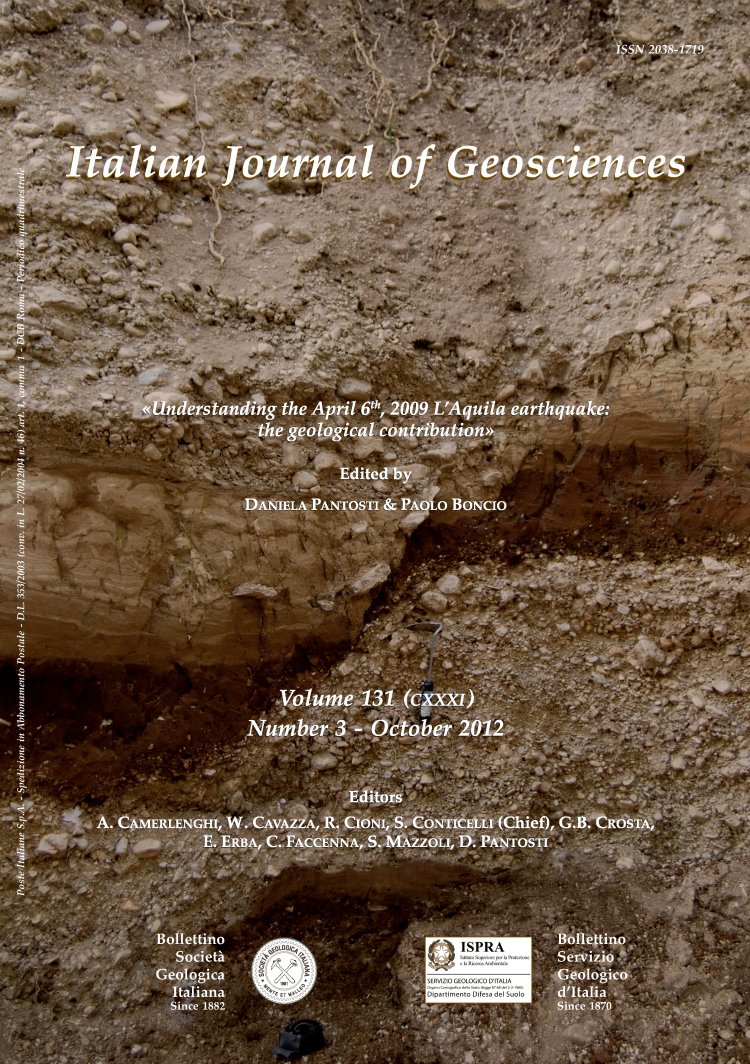
The coseismic and postseismic deformation of the L'Aquila, 2009 earthquake from repeated GPS measurements
Roberto Devoti(1), Letizia Anderlini(2), (3), Marco Anzidei(4), Alessandra Esposito(4), Alessandro Galvani(4), Grazia Pietrantonio(4), Annarita Pisani(4), Federica Riguzzi(4), Vincenzo Sepe(4) & Enrico Serpelloni(5)
(1) Corresponding author: Istituto Nazionale di Geofisica e Vulcanologia, CNT, Via di Vigna Murata, 605 - 00143 Roma, Italia.
Phone: +39 06 5186 0562. Fax: +39 06 5186 0541. E-mail: roberto. devoti@ingv.it
(2) Istituto Nazionale di Geofisica e Vulcanologia, sezione di Bologna, Via Donato Creti, 12 - 40128 Bologna, Italia.
(3) Università di Bologna, Dip. Fisica, Viale Berti Pichat, 6/2 - 40127 Bologna.
(4) Istituto Nazionale di Geofisica e Vulcanologia, sezione CNT, Via di Vigna Murata, 605 - 00143 Roma, Italia.
(5) Istituto Nazionale di Geofisica e Vulcanologia, sezione CNT, Via Donato Creti, 12 - 40128 Bologna, Italia.
Abstract
Keywords
Get Full Text Supplementary Material